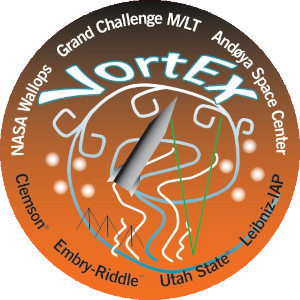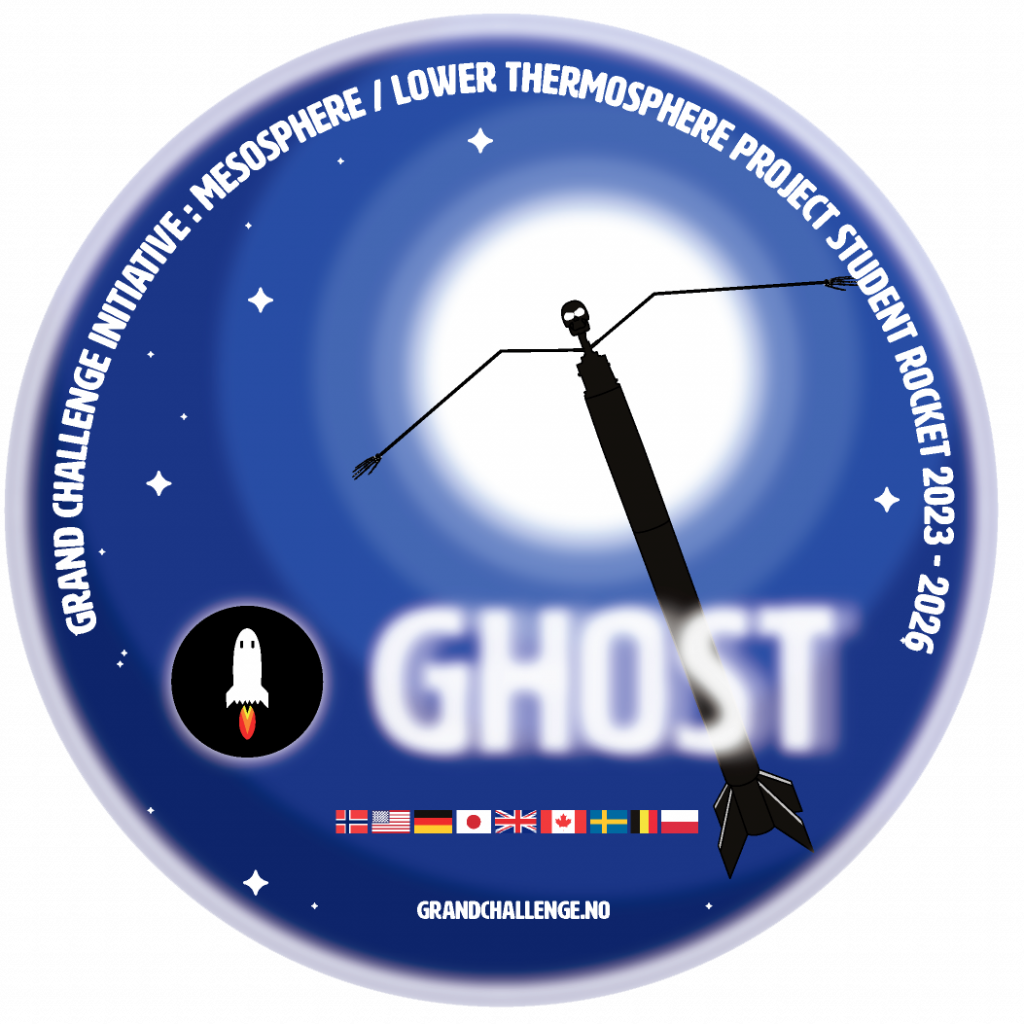As a part of the “CEDAR Virtual Meeting 2020” the GCI M/LT workshop started 1700 CET and lasted until 20:10 CET. The Zoom counter showed steadily 100 participants, which was max allowed for our session in Zoom. We apologize to those who were denied access to the meeting due to the maximum limit of 100 participants for which the session was set up.
We had 24 planned talks, 1 was cancelled but will be posted online. A couple had technical issues, but overall it went as planned.
Lot’s of new ideas for science projects and cross country/Atlantic cooperations in M/LT research from 2022 as part of GCI. At this point of time 10 sounding rocket Projects are either funded, proposed or will be proposed for participation in GCI M/LT:
SEED (Sporadic E Electrodynamics) (Barjatya/Embry-Riddle)
VortEX (Lehmacher/Clemson/USA)
ISAS/JAXA (Abe)
4DSpace/DAEDALUS (Miloch/UiO/Norway)
Turb3D (Strelnikov/Lubken/IAP/Germany)
MaxiDusty-2 (Mann/UiT/Norway)
ORIGIN (Gumbel/MISU/Sweden)
SYSTER & BROR (Ivchencko/KTH/Sweden)
ROMARA (Stude/DLR/Germany)
GHOST (Grand Challenge Mesosphere Student Rocket) (Blix & Koehler/ASC/COSGC)


The list of planned ground based and ballon science projects/campaigns will be updated shortly.
At the end of the meeting, a GCI M / LT coordination group was set up consisting of representatives from all 9 GCI M/LT countries, plus dedicated coordinators for the program itself and for student rocket(s). This group becomes an important part of the job of operationalizing the project’s white paper and the good ideas presented thorugh the talks in this session.
To increase the chances for success , the GCI M/LT should start planning for a broad participation at the 25th ESA Symposium on European Rocket and Balloon Programmes and related Research which will take place on 6-10 June 2021 in Biarritz, France. This biannually scientific gathering is all about activities at Andøya Space Center (Norway) and ESRANGE Space Center (Sweden).
The session was recorded, and these recordings and some selected talks (those who had technical difficulties) will be made available shortly.
GCI M/LT Coordination Group:
Chair: Douglas Rowland (NASA Goddard, USA)
Program Coordinator: Kolbjørn Blix (ASC, Norway)
Student Rocket Coordinator: Chris Koehler (U of Colorado/COSGC)
Gerald Lehmacher (Clemson, USA)
Takumi Abe (ISAS/JAXA, Japan)
Wojciech Miloch (UiO, Norway)
Ingrid Mann (UiT, Norway)
William Ward, (New Brunswick, Canada)
Boris Strelnikov (IAP, Germany)
Jörg Gumbel (Stockholm University, Sweden)
John Plane (University of Leeds, UK)
Tomasz Noga (Lukasiewicz Research Network – Institute of Aviation, Poland)
Oleg Ugolnikov (Space Research Institute, Russian Academy of Sciences)
Download links:
Recording of the complete session:
–
Talks experiencing technical issues: (to come soon)
David Miles (University of Iowa) | Sounding Rocket Magnetometer Option
Oliver Drescher (DLR MORABA, Germany) | HAS – Development of a thrust controllable research platform to hover in the middle atmosphere
Vladimir Yushkov (Central Aerological Observatory, Russia) | Sounding Rocket in Russia
Joan Stude (German Aerospace Center / DLR Institute of Atmospheric Physics) | Future plans on deploying our rocket mass spectrometer ROMARA
Complete list of talks:
1700-1705: Kolbjørn Blix (ASC, Norway)| Agenda Information
1705-1710: CHAIR: Doug Rowland (NASA Goddard, USA) | GCI intro – CUSP status, M/LT plans
1710-1715: Gerald Lehmacher (Clemson Uni., USA) | The Vorticity Experiment (VortEx) 2022: an update
1715-1720: Wojciech Miloch (U of Oslo, Norway) | Lower ionosphere – thermosphere and space weather activities at the University of Oslo, Norway
1720-1725: Boris Strelnikov (IAP, Germany) | Scientific questions for sounding rockets (by B. Strelnikov and F.-J. Lübken)
1725-1730: Henriette Trollvik (U of Tromsø, Norway) | Mesospheric Dust Studies Using Rocket Observations
1730-1735: Jörg Gumbel (Stockholm University, Sweden) | ORIGIN – a proposed rocket campaign connecting O, O2 and OH in the Earth\’s nightglow
1735-1740: William Ward (University of New Brunswick, Canada) | Untangling dynamics and transport in the mesopause region
1740-1745: Nickolay Ivchenko (KTH, Sweden) | \”SYSTER\” rocket project as part of ESA Daedalus Phase A campaign
1745-1750: David Miles (University of Iowa) | Sounding Rocket Magnetometer Options (Pre-recorded)
1750-1755: Yun-Hang Cho (University of Sheffield, UK) | Overview of the Sheffield Space Initiative and Opportunities with GCI M/LT
1755-1800: Richard Collins (University of Alaska Fairbanks, USA) | Wave Activity Forcing of E-Region (WAFER) Richard Collins for the WAFER team
1800-1805: Oliver Drescher (DLR MORABA, Germany) | HAS – Development of a thrust controllable research platform to hover in the middle atmosphere (Pre-recorded)
1805-1810: Vladimir Yushkov (Central Aerological Observatory, Russia) | Sounding Rocket in Russia (Pre-recorded)
1810-1815: Peter Dalin (Swedish Institute of Space Physics) | Stratospheric Observations of Noctilucent Clouds – SONC experiment
1815-1820: Joan Stude (German Aerospace Center / DLR Institute of Atmospheric Physics) | Future plans on deploying our rocket mass spectrometer ROMARA
1820-1825: Diego Janches (NASA/GSFC, USA) | Balloon Sodium Lidar to measure Tides in the Antarctic Region (B-SoLiTARe)
1825-1830: Xiaoyan Zhou (University California, Los Angeles, USA) | The BALBOA Project: BALloon-Based Observations for Sunlit Aurora
1830-1835: Oleg Ugolnikov (Space Research Institute, Russian Academy of Sciences) | Noctilucent Clouds Size Estimation from All-Sky Monitoring: Color and Polarization Approaches (Pre-recorded)
1835-1840: John Plane (University of Leeds, UK) | Questions in mesospheric chemistry
1840-1845: Mattias Abrahamsson (SSC, Science Services Division, Sweden) | Esrange Space Center – a launch and measurement site for GCI M/LT
1845-1850: Liz MacDonald (NASA GSFC, USA) | Citizen Science and the Grand Challenges
1850-1855: Tomasz Noga (Lukasiewicz Research Network – Institute of Aviation) | Polish Contribution to GCI M/LT
1855-1900: Hein Olthof (T-Minus Engineering B.V., Holland) | Use of micro sounding rockets for supporting 4D atmospheric measurements
1900-1905: Martina Faenza (Nammo Raufoss AS, Norway) | Nucleus, Norwegian sounding rocket for mesosphere research

